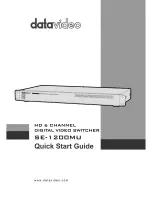
IP Addressing
F-2
893-743-A
The Class C Internet address format (see Figure F-3) uses the highest 24 bits as
the network field and sets the three highest-order bits to 1,1,0. The remaining
eight bits form the host field. More than two million Class C networks can
exist, and each Class C network can have up to 255 hosts.
Figure F-3. Class C Internet address
The Class D Internet address format is reserved for multicast groups, as
discussed in RFC 1112. In Class D addresses, the four highest-order bits are set
to 1,1,1,0.
The Class E Internet address is reserved for future use. In Class E addresses,
the four highest-order bits are set to 1,1,1,1. The router currently ignores the
Class D and Class E Internet addresses, except for the global broadcast address
255.255.255.255.
Internet Address Notation
Internet addresses are written as four decimal numbers (for example,
255.255.255.255). Each decimal number represents an 8-bit octet. When strung
together, the four octets form the 32-bit Internet address. This notation is called
dotted-decimal notation.
These examples show 32-bit values expressed as Internet addresses:
192.31.7.19
10.7.0.11
255.255.255.255
0.0.0.0
The largest possible value of a field in a dotted-decimal number is 255, which
represents an octet of all ones.
1
21
8
Host
1
Network
1 1
0
1
















































